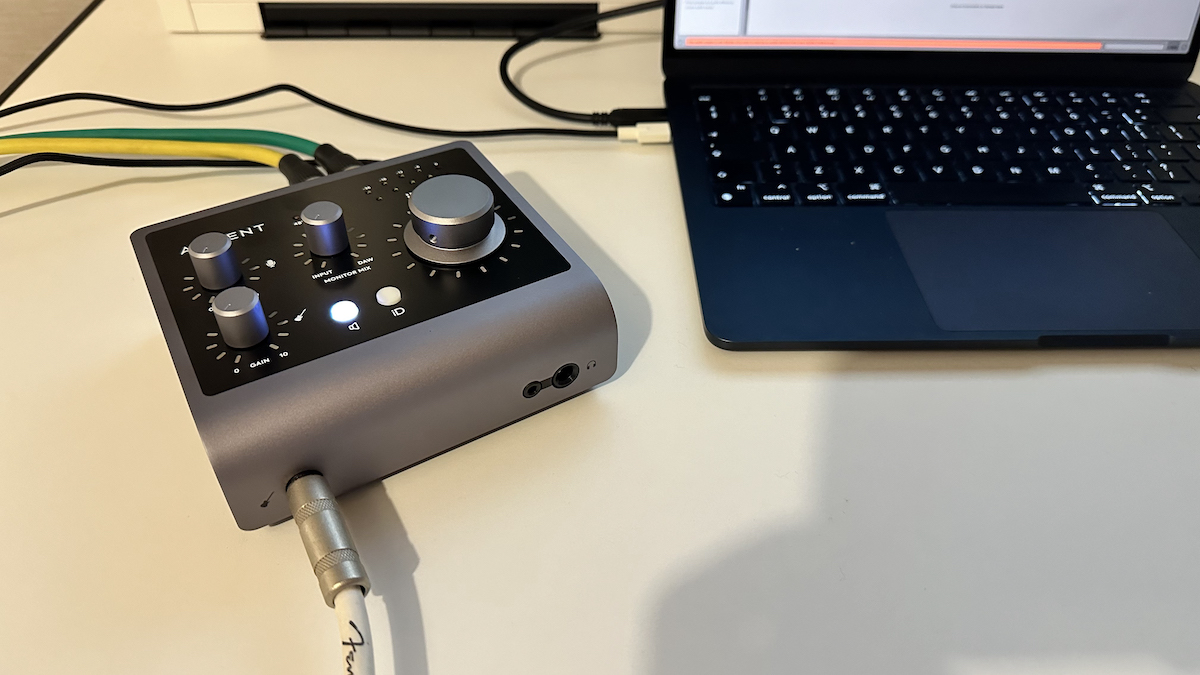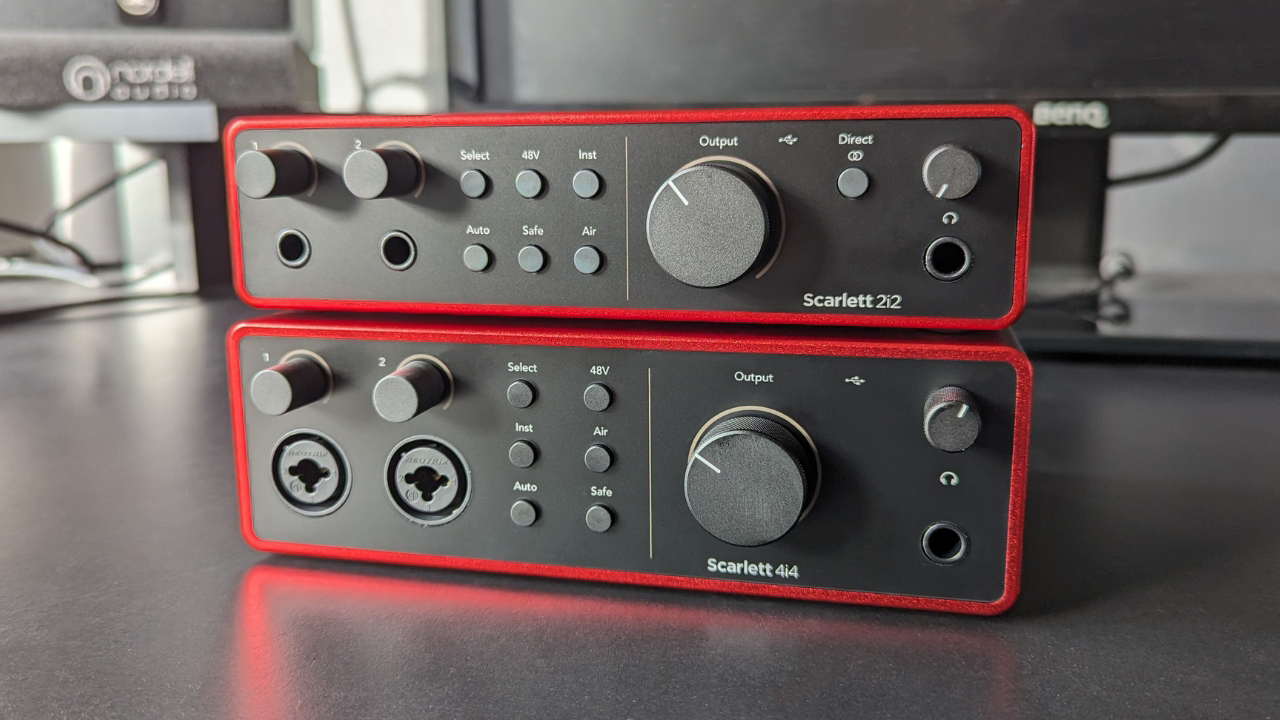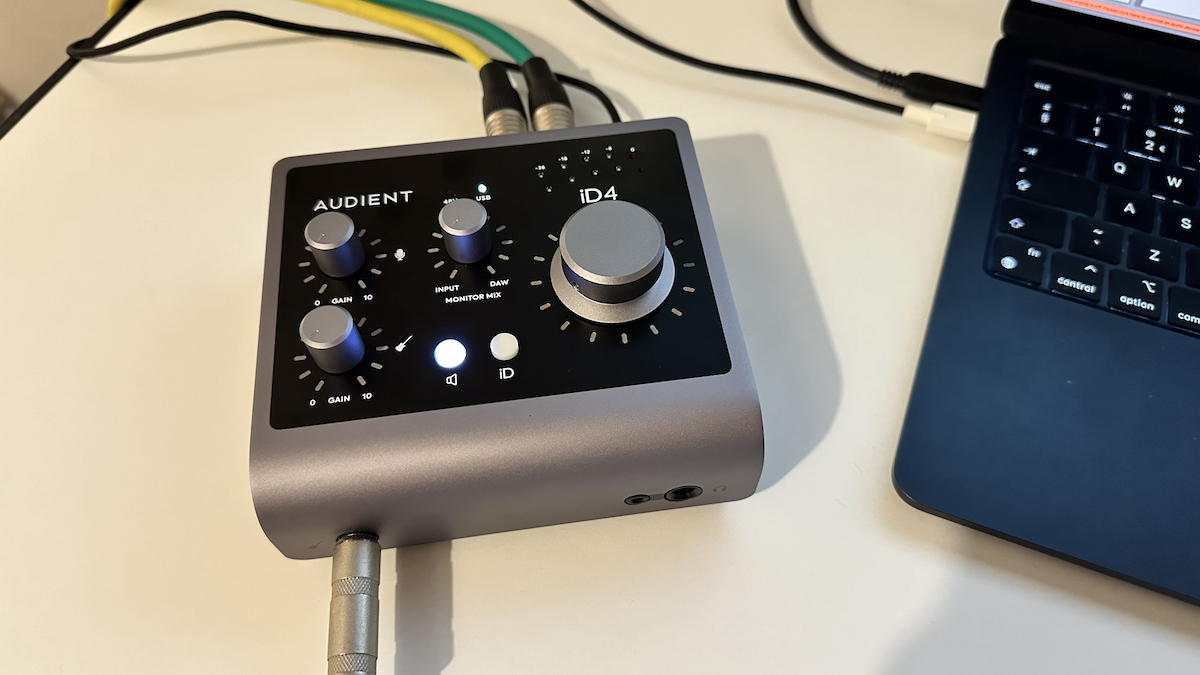Guitar World Verdict
For a shade under $200, the Audient iD4 MkII offers guitarists a quick, simple way to get a high-quality signal into their amp simulator of choice. It’s ideal for home studios and has some cool ‘hidden’ features to make life easier for you.
Pros
- +
Simple to use
- +
Great for guitars
- +
Dual headphone outputs are useful
Cons
- -
Not much to criticise at this price!
You can trust Guitar World
The second iteration of Audient’s iD range of budget interfaces has a lot to live up to. The first versions were extremely well respected, offering a combination of thoughtful design and some nice quality-of-life touches that elevated them above many others in the crowded entry-level interface bracket. Thankfully, the qualities of the Audient iD4 MKII are apparent straight out of the box.
What we have is a simple enough two-in/two-out USB audio interface, with an XLR/jack combi input on the rear of the device and single ¼” jack input on the front. Additionally, on the front, you get a neat dual-output headphone section, which has both a ¼” output and a 3.5mm output – these can be used simultaneously, or you could use one as an auxiliary output to send audio out to a guitar pedal. The back of the unit then houses the standard stereo jack outputs and connection for the interface’s USB-C cable. All of the main controls – gain for both channels, a monitor mix knob and a large, chunky volume encoder – sit atop the surface of the unit, keeping them within easy reach for those crucial tweaks.
As an interface for recording, performing and producing music, the Audient manages to be both simple yet with enough going on to keep small-scale guitar setups happy. But how does it fare when compared to other, similarly priced interfaces? Let’s check it out.
Audient iD4 MkII review: Hands-on

As you’d expect, setting the iD4 MkII up is about as simple as it gets. With my Windows test machine, I made sure to have the right drivers installed and then it was just a case of plugging it in. With the MacOS machine, it did all the background work itself so was even simpler. As a bonus, I also tested it with my iPhone – it advertises iOS compatibility on the box – and can report this too was a pain-free experience.

Focusrite Scarlett 2i2
PreSonus Studio 24c
Universal Audio Volt 2
The iD4 MkII is a very sturdy unit, with a solid feel to it thanks to the all-metal construction. The three smaller encoders (two gain and one monitor mix) felt smooth and precise, while the main volume encoder had a pleasing weight to it. I did find the gain level LEDS sometimes took a second to ‘catch up’ with the inputs I was making on the main encoder but this isn’t likely to make or break your recording session.
Using Ableton Live as my test DAW, I found the iD4 did exactly what I wanted it to with zero fuss or faff. When you’re testing a budget audio interface, simplicity is probably the key metric. At this price range, you’re likely aiming towards people who perhaps aren’t vastly experienced with music technology, so keeping things as foolproof as possible is a wise strategy. The iD4 passes this test with flying colors.
For the test setup, I wanted to record my parlor acoustic guitar so ran a condenser microphone – the Neumann TLM102 – into the back of the unit and engaged the built-in phantom power to ensure we got a signal. On the front, I made use of the JFET input to get a clean signal from my test electric guitar into a copy of Native Instruments’ Guitar Rig. From a workflow perspective, having both the acoustic and electric ready to record instantaneously was ideal for playing around with different tracks and takes.

The iD4’s iD button unlocks some useful features too. The ‘Scroll Control’ feature turns the master volume knob into a scroller for whatever you’ve highlighted using your mouse. I found this was especially helpful when I was recording automation lines into Live, raising and lowering the FX mix of a heavy-sounding reverb to accentuate certain parts of the recording. This kind of tactile control is not something you’d necessarily expect from an audio interface, nor something you’ll use all the time, but a nice touch all the same.
The dual monitor mix feature was also helpful. By holding both the mute and iD buttons, the main encoder then created a stereo sub-mix of the mic and line inputs, allowing me to hear the mic in one ear and the guitar in the other. Again, a small feature but one that shows the people who have made this interface understand musicians and the situations they could find themselves in.
All told, the Audient iD4 MkII offers a huge amount of sensible features, with some nice additional touches you might not expect at this end of the entry-level spectrum. For guitarists, the sound quality and ease of use make it an ideal guitar audio interface for anybody relying on amp sims for their recording needs. I also found the overall levels of build quality to be very high, giving me confidence this would make the ideal audio interface for small home studio recording setups.
Audient iD4 MkII review: Specifications
- Connectivity: USB-C
- Converter resolution: 24 bit
- Supported sample rates: 96kHz
- Inputs: 1 x XLR/Jack combi, 1 x ¼” jack
- Outputs: 2 x ¼” Jack outputs, 1 x ¼” headphone out, 1 x 3.5mm headphone out
- Size: 133mmx120mmx41mm
- Weight: 740g
- Contact: Audient
Chris Corfield is a journalist with over 12 years of experience writing for some of the music world's biggest brands including Orange Amplification, MusicRadar, Guitar World, Total Guitar and Dawsons Music. Chris loves getting nerdy about everything from guitar gear and synths, to microphones and music production hardware.
"Brilliantly precise monitoring headphones with wide open-back sound": Audio-Technica ATH-R70XA review
“We’ve painstakingly restored Les Paul’s original gear”: The Les Paul Recording Studio opens in Hollywood – bringing the innovator’s revolutionary gear to a whole new generation of musicians












